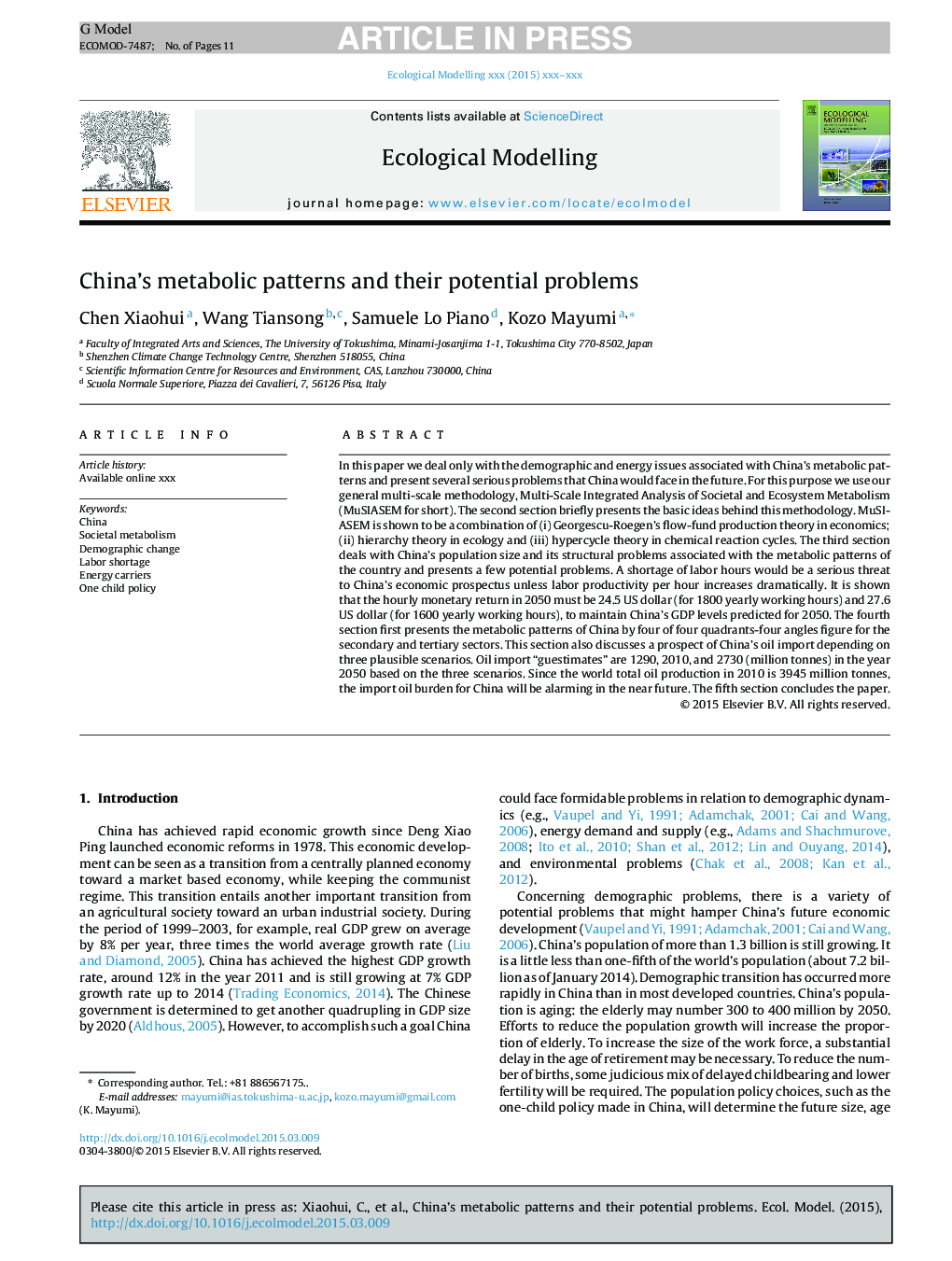| کد مقاله | کد نشریه | سال انتشار | مقاله انگلیسی | نسخه تمام متن |
|---|---|---|---|---|
| 6296384 | 1617429 | 2015 | 11 صفحه PDF | دانلود رایگان |
عنوان انگلیسی مقاله ISI
China's metabolic patterns and their potential problems
ترجمه فارسی عنوان
الگوهای متابولیک چین و مشکلات بالقوه آنها
دانلود مقاله + سفارش ترجمه
دانلود مقاله ISI انگلیسی
رایگان برای ایرانیان
کلمات کلیدی
چین، متابولیسم اجتماعی، تغییر جمعیتی، کمبود کار، حامل انرژی، سیاست یک کودک،
موضوعات مرتبط
علوم زیستی و بیوفناوری
علوم کشاورزی و بیولوژیک
بوم شناسی، تکامل، رفتار و سامانه شناسی
چکیده انگلیسی
In this paper we deal only with the demographic and energy issues associated with China's metabolic patterns and present several serious problems that China would face in the future. For this purpose we use our general multi-scale methodology, Multi-Scale Integrated Analysis of Societal and Ecosystem Metabolism (MuSIASEM for short). The second section briefly presents the basic ideas behind this methodology. MuSIASEM is shown to be a combination of (i) Georgescu-Roegen's flow-fund production theory in economics; (ii) hierarchy theory in ecology and (iii) hypercycle theory in chemical reaction cycles. The third section deals with China's population size and its structural problems associated with the metabolic patterns of the country and presents a few potential problems. A shortage of labor hours would be a serious threat to China's economic prospectus unless labor productivity per hour increases dramatically. It is shown that the hourly monetary return in 2050 must be 24.5 US dollar (for 1800 yearly working hours) and 27.6 US dollar (for 1600 yearly working hours), to maintain China's GDP levels predicted for 2050. The fourth section first presents the metabolic patterns of China by four of four quadrants-four angles figure for the secondary and tertiary sectors. This section also discusses a prospect of China's oil import depending on three plausible scenarios. Oil import “guestimates” are 1290, 2010, and 2730 (million tonnes) in the year 2050 based on the three scenarios. Since the world total oil production in 2010 is 3945 million tonnes, the import oil burden for China will be alarming in the near future. The fifth section concludes the paper.
ناشر
Database: Elsevier - ScienceDirect (ساینس دایرکت)
Journal: Ecological Modelling - Volume 318, 24 December 2015, Pages 75-85
Journal: Ecological Modelling - Volume 318, 24 December 2015, Pages 75-85
نویسندگان
Chen Xiaohui, Wang Tiansong, Samuele Lo Piano, Kozo Mayumi,
